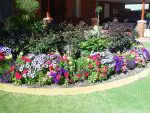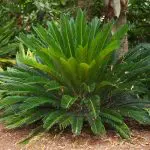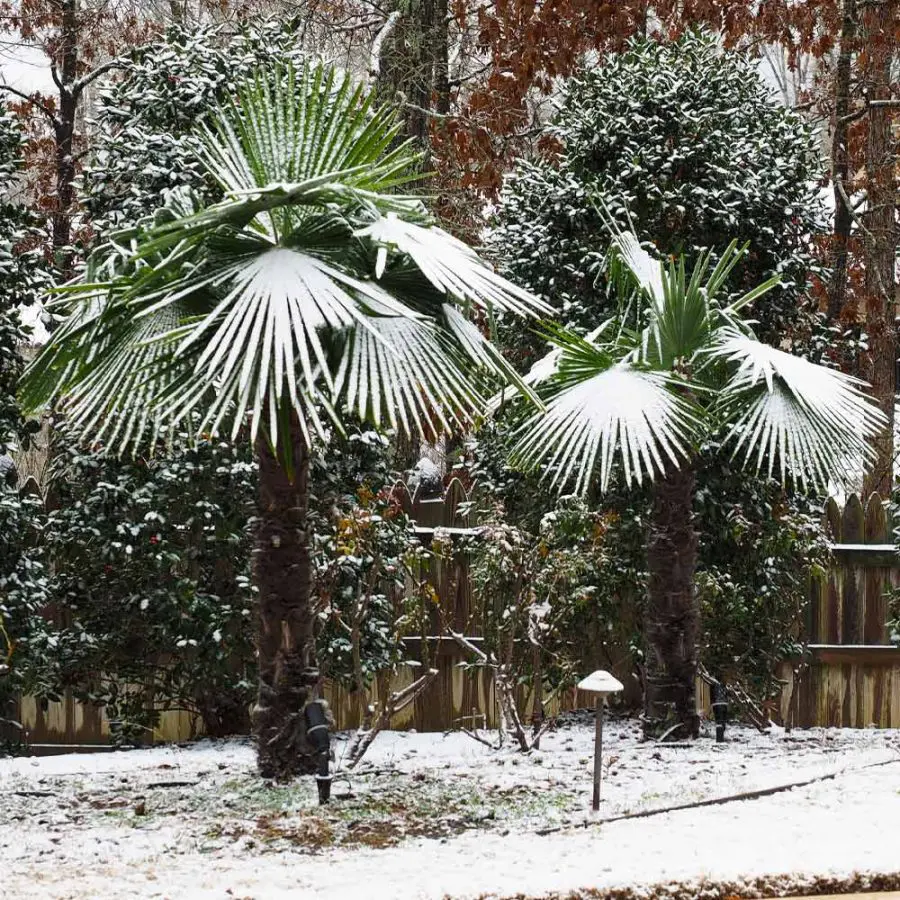This post contains affiliate links. If you buy something from one of our links we may earn a commission. Thanks
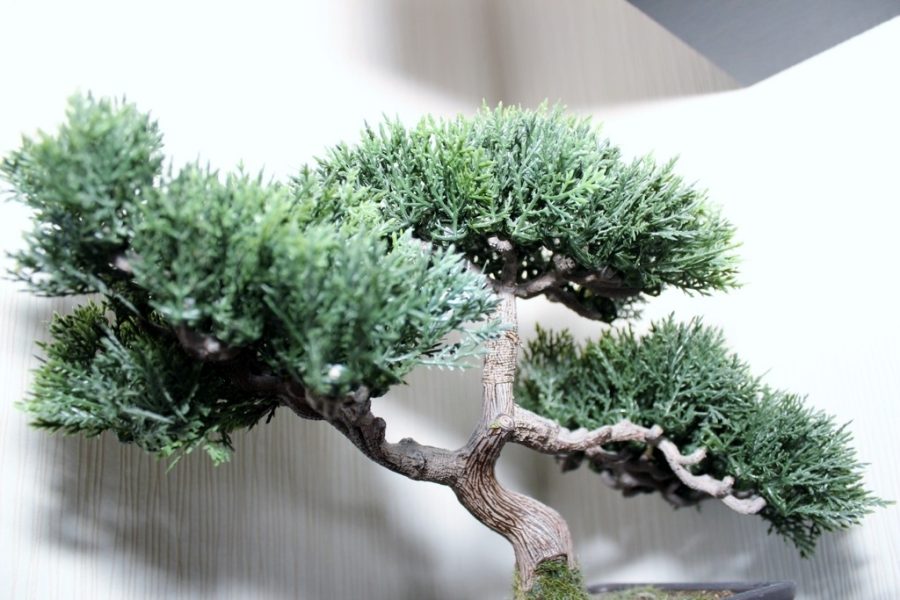
Discover the beauty of indoor bonsai trees and learn how to care for these miniature trees!
Add some green to your space and enjoy the calming effects of nature.
Tips for thriving indoor Bonsai trees include ensuring proper lighting, maintaining the correct humidity levels, using well-draining soil, regular watering but not over-watering, fertilizing during the growing season, and conducting periodic pruning to maintain shape and promote growth.
Adequate care and understanding of the specific needs of your Bonsai species will foster a healthy and aesthetically pleasing miniature tree.
Looking to add some greenery to your indoor space? Indoor bonsai trees are a perfect choice!
These miniature indoor trees are not only aesthetically pleasing, but they also have a calming effect on your mind and body.
With a little care and attention, you can create a beautiful indoor garden with these unique and captivating trees.
In this guide, we’ll explore the world of indoor bonsai trees and provide you with all the tips and tricks you need for indoor bonsai care for them.
So, let’s dive in and discover the wonders of indoor bonsai trees!
What are indoor bonsai trees?
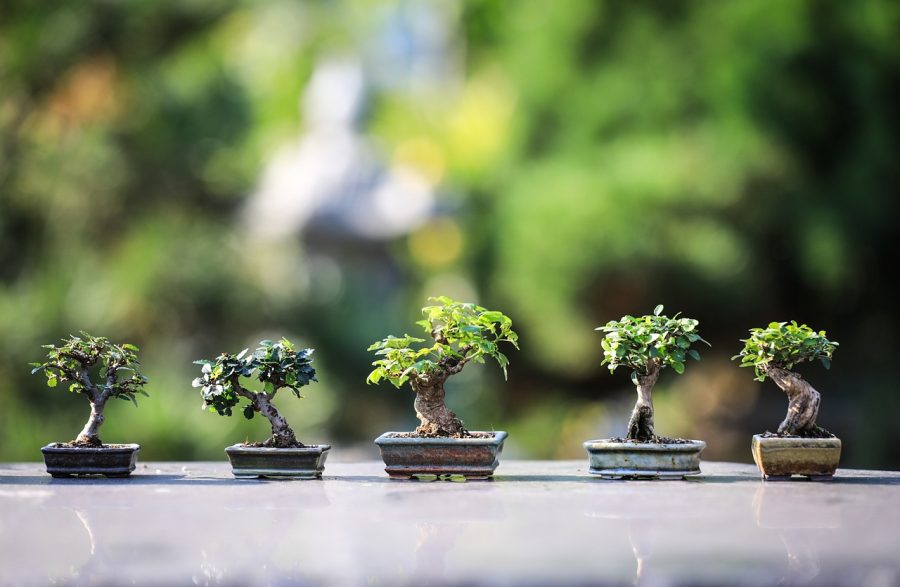
If you’re looking for a new way to bring some life and vibrancy into your home or office space then look no further than indoor bonsai trees!
These miniature trees have been cultivated for centuries and are now more popular than ever.
Not only are they aesthetically pleasing, but they also offer a range of benefits for your physical and mental health.
We’ll explore the fascinating world of indoor bonsai trees, from their rich history to the many advantages of having them in your space.
So, let’s get started on this exciting journey of discovery!
What are indoor bonsai trees?
Indoor bonsai trees are miniature trees that are grown indoors.
They are carefully cultivated and pruned to maintain a small size, typically ranging from a few inches to a few feet tall.
These trees come in a variety of species, each with its own unique shape and characteristics.
Indoor bonsai trees are known for their ornamental beauty and ability to improve the overall ambiance of any indoor space.
According to Wikipedia: Bonsai (Japanese: lit. ’tray planting’ is the Japanese and East Asian art of growing and training miniature trees in containers, developed from the traditional Chinese art form of penjing. Penjing and bonsai differ in that, the former, attempts to display “wilder,” more naturalistic scenes, often representing landscapes, including elements such as water, rocks or figurines; on the other hand, bonsai typically focuses on a single tree or a group of trees of the same species, with a higher level of aesthetic refinement.
A brief history of bonsai trees and their significance
Bonsai trees originated in China over a thousand years ago and were later adopted and refined by the Japanese.
The word “bonsai” literally means “planted in a container,” and the art of growing and caring for these miniature trees has been passed down through generations.
Bonsai trees were traditionally considered a symbol of wealth and prestige and were only accessible to the wealthy elite.
Today, bonsai trees are enjoyed by people all over the world as a form of artistic expression and a way to connect with nature.
Benefits of having an indoor bonsai tree
There are many benefits to having an indoor bonsai tree.
First and foremost, these miniature trees provide a sense of natural beauty and tranquility in any indoor space.
Studies have also shown that indoor plants, including bonsai trees, can help to reduce stress, boost productivity, and improve air quality.
Additionally, caring for a bonsai tree can be a rewarding and meditative hobby that encourages mindfulness and patience.
Overall, indoor bonsai trees are a wonderful way to enhance your indoor environment and promote a sense of well-being.
Types of Indoor Bonsai Trees
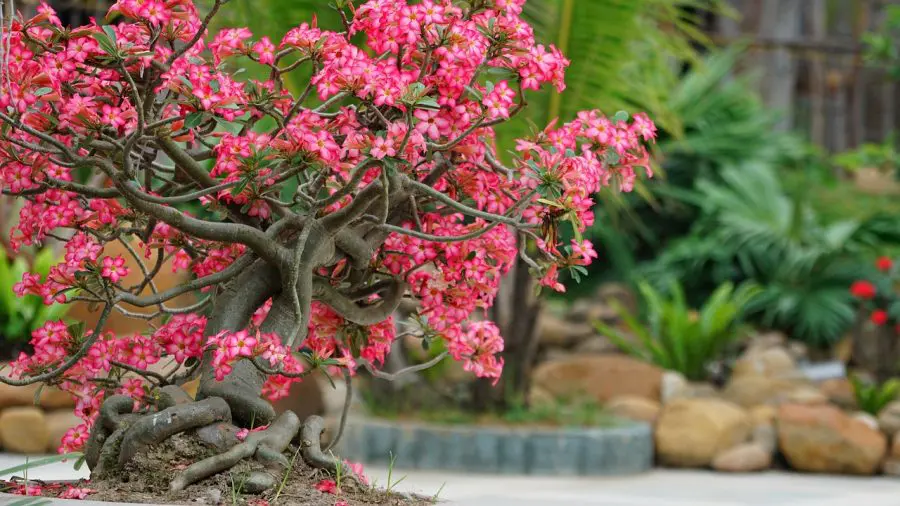
If you’re thinking about getting an indoor bonsai tree, you might be wondering which species is the right one for you.
There are dozens of different types of indoor bonsai trees to choose from, each with its own unique characteristics and requirements.
From the popular Ficus and Chinese Elm to the exotic Jade and Juniper, there’s a bonsai tree for everyone.
Some can be a deciduous tree and some may be evergreen.
In this section, we’ll explore the various types of indoor bonsai trees and help you determine which one will thrive in your indoor environment.
So, let’s dive into the fascinating world of indoor bonsai tree species!
Popular species for indoor bonsai trees
There are many different species of trees that are suitable for indoor bonsai cultivation.
Some of the most popular species include the Ficus, Chinese Elm, Jade, Juniper, and Serissa.
Each species has its own unique appearance, growth habits, and care requirements, so it’s important to choose the one that is best suited for your indoor environment and personal preferences.
There is no best indoor bonsai tree so the best bonsai tree is the one you like, find attractive, and will care for.
Here is a list of some plants used for bonsai trees:
• Ficus retusa or Ginseng ficus
• Ulmus parvifolia or Chinese elm
• Dwarf jade plant or Portulacaria afra
• Japanese maples or Acer palmatum
• Fukien tea tree or Carmona retusa
• Ficus microcarpa or Chinese banyan
• Eugenia myrtifolia or Australian brush cherry
• Schefflera arboricola or Dwarf umbrella tree
• Grewia occidentalis or Crossberry
• Japanese white pine or Pinus parviflora
• Adenium obesum or Desert rose
• Pachira money tree or Pachira aquatica
• Serissa japonica or Snowbush
• Juniperus Chinensis or Juniper tree
Differences between indoor and outdoor bonsai trees
While outdoor and indoor bonsai trees share many similarities, there are some key differences to keep in mind.
Indoor bonsai trees are typically smaller and slower-growing than outdoor bonsai trees, as they are limited by the size of their container and the amount of light and nutrients they receive.
Additionally, indoor bonsai trees require special care to ensure they receive the proper amount of water, light, and nutrients.
Factors to consider when choosing an indoor bonsai tree
When choosing an indoor bonsai tree, there are several factors to consider.
These include the tree’s size, shape, care requirements, and compatibility with your indoor environment.
For example, if you live in a dry climate, you may want to choose a species that is more drought-tolerant, such as Juniper trees or Ficus trees.
It’s also important to consider the amount of light and humidity in your indoor space, as these factors can impact the growth and health of your bonsai tree.
By taking these factors into consideration, you can choose the perfect indoor bonsai tree that will thrive in your home or office environment.
How to Care for Indoor Bonsai Trees
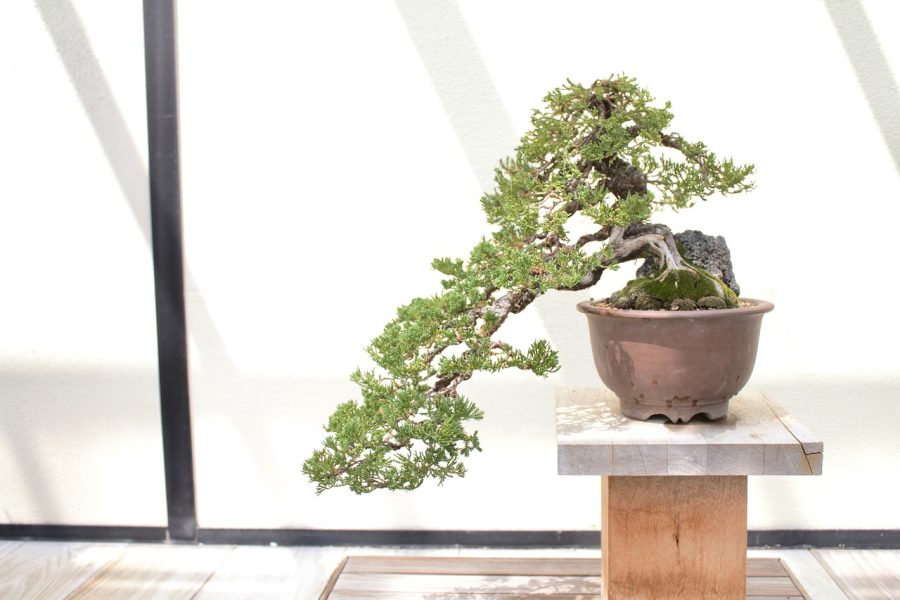 Congratulations on bringing home your new indoor bonsai tree! Now that you have a beautiful miniature tree in your indoor space, it’s important to learn how to care for it properly.
Congratulations on bringing home your new indoor bonsai tree! Now that you have a beautiful miniature tree in your indoor space, it’s important to learn how to care for it properly.
The good news is while indoor bonsai trees are relatively low-maintenance compared to their outdoor counterparts, they still require regular care and attention to thrive.
In this section, we’ll cover everything you need to know about caring for your indoor bonsai tree, from watering and fertilizing to pruning and pest control.
So, let’s get started on keeping your indoor bonsai tree healthy and beautiful for years to come!
Watering and humidity requirements
Proper watering and humidity levels are crucial for the health and growth of your indoor bonsai tree.
Bonsai trees typically require frequent watering, but it’s important not to overwater them, as this can lead to root rot and other problems.
Additionally, many indoor bonsai trees require high humidity levels than are typically found in most indoor environments.
You may want to use a humidity tray to prevent low humidity.
We’ll cover how often to water your tree, how to test soil moisture, and how to increase humidity levels for your indoor bonsai tree.
Soil and fertilizer requirements
Choosing the right soil and fertilizer is essential for the health and growth of your indoor bonsai tree.
Bonsai trees require soil that provides good drainage and aeration, while also retaining moisture and nutrients.
Additionally, fertilizing your bonsai tree on a regular basis can help ensure that it has the nutrients it needs to thrive.
We’ll cover how to choose the right soil and fertilizer for your indoor bonsai tree, as well as how often to fertilize it.
Welcome to the section on fertilizer requirements for indoor bonsai trees! Fertilizing is an essential part of maintaining the health and vitality of your bonsai tree.
Just like any other living organism, bonsai trees require nutrients to grow, develop, and thrive.
In this section, we will discuss the importance of fertilizing your indoor bonsai tree, the different types of fertilizers available, and the proper techniques for applying them. So let’s get started!
Importance of Fertilizing Indoor Bonsai Trees:
Fertilizing is an essential aspect of indoor bonsai tree care. Bonsai trees require regular nutrient intake for healthy growth and vibrant foliage.
Without proper fertilizer, your bonsai tree may struggle to thrive and may become weak and susceptible to disease.
Types of Fertilizers for Indoor Bonsai Trees:
There are several types of fertilizers available for indoor bonsai trees, including organic and synthetic fertilizers.
Organic fertilizers are derived from natural sources and release nutrients slowly, while synthetic fertilizers provide an immediate nutrient boost to the tree.
When to Fertilize Your Indoor Bonsai Tree:
The best time to fertilize your indoor bonsai tree is during the growing season, which is typically from early spring to late summer.
Fertilizing during this time will provide the tree with the nutrients it needs to develop healthy roots, leaves, and branches.
How to Fertilize Your Indoor Bonsai Tree:
The most common method for fertilizing indoor bonsai trees is to use a liquid fertilizer.
Dilute the fertilizer in water as per the instructions on the package and apply it to the soil around the tree’s roots.
You can also use solid fertilizers, which are placed on top of the soil, but make sure to follow the package instructions for proper application.
Common Mistakes to Avoid when Fertilizing Indoor Bonsai Trees:
One common mistake when fertilizing indoor bonsai trees is over-fertilization. Over-fertilization can damage the roots and leaves of the tree and cause it to become unhealthy.
Always follow the instructions on the package and never apply more fertilizer than recommended.
Another mistake to avoid is fertilizing the tree during its dormant season, as it will not be able to absorb the nutrients and may lead to fertilizer burn.
Soil Requirements for Indoor Bonsai Trees
Indoor bonsai trees have specific soil requirements that must be met for optimal growth and health.
Choosing the right soil mixture for your indoor bonsai tree is crucial to its success.
In this section, we will discuss the importance of soil requirements, what to look for in a soil mixture, and how to prepare your soil.
Soil Requirements for Indoor Bonsai Trees
Soil is the foundation of any plant’s growth, and indoor bonsai trees are no exception.
Proper soil requirements are essential to ensure the tree’s overall health and longevity.
The soil provides the tree with essential nutrients, water, and oxygen necessary for growth.
A well-draining soil mix with a balanced nutrient content ensures that the roots have access to the necessary elements to thrive.
What to Look for in a Soil Mixture for Indoor Bonsai Trees
The ideal soil mixture for indoor bonsai trees should be well-draining, moisture-retentive, and provide a balance of nutrients.
A good soil mixture should also have a neutral pH level. Some common soil components include akadama, lava rock, peat moss, perlite, and vermiculite.
Each component serves a specific purpose in the soil mixture, such as providing drainage or retaining moisture.
How to Prepare Your Soil for Indoor Bonsai Trees
Preparing the soil for your indoor bonsai tree involves selecting the right soil mixture and ensuring it’s free of contaminants.
You can also add organic matter like leaf litter or compost to the soil mixture to improve its nutrient content.
It’s also essential to sterilize the soil mixture to prevent the growth of harmful fungi or bacteria.
In summary, choosing the right soil mixture is crucial for the health and growth of your indoor bonsai tree.
Understanding the soil requirements for your tree and how to prepare the soil will ensure that your bonsai thrives for years to come.
Lighting Requirements
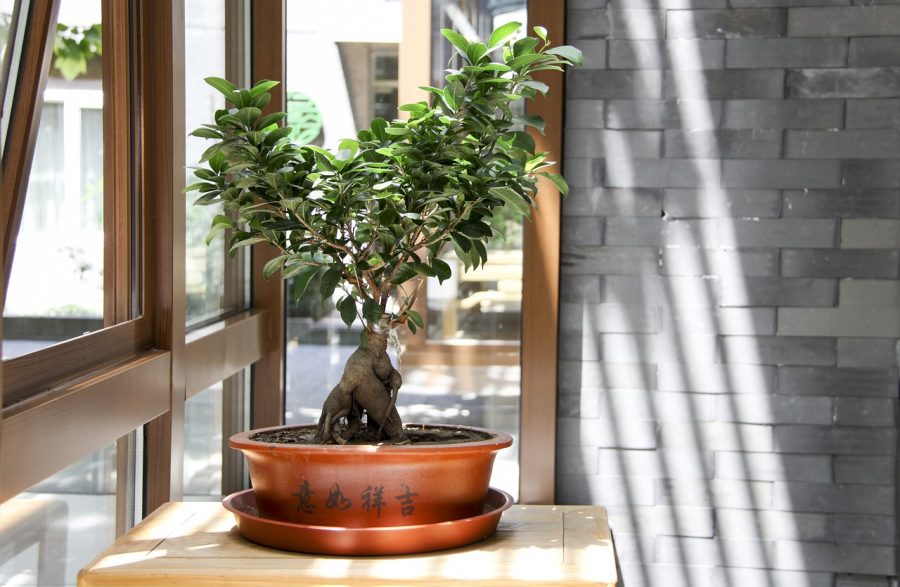
When it comes to indoor bonsai trees, lighting intensity is one of the most important factors to consider for healthy growth. Here are some things to keep in mind:
Understanding the Needs of Your Bonsai Tree
Different bonsai species have varying lighting needs, so it’s important to research the specific requirements of your tree.
As a general rule, most indoor bonsai trees require bright indirect sunlight.
A south-facing window can provide ample light for many species, but be sure to monitor your tree and adjust its placement if it starts to show signs of too much light or too little light.
Supplementing Natural Light
In some cases, natural light may not be sufficient for your bonsai tree.
If this is the case, you can supplement it with artificial lighting.
LED grow lights are a popular option, as they provide the full spectrum of light needed for healthy growth.
Another option is fluorescent lighting. Keep in mind that too much artificial light can also be harmful, so be sure to monitor your tree and adjust as needed.
Common Lighting Mistakes to Avoid
One common mistake in bonsai tree care is placing the tree in direct full sun, which can scorch the leaves and damage the plant.
Another mistake is keeping the tree in low indirect light conditions, which can cause slow growth and leggy branches.
Be sure to monitor your tree’s lighting conditions and adjust as needed to promote healthy growth.
Pot Size And Repotting And Root Pruning
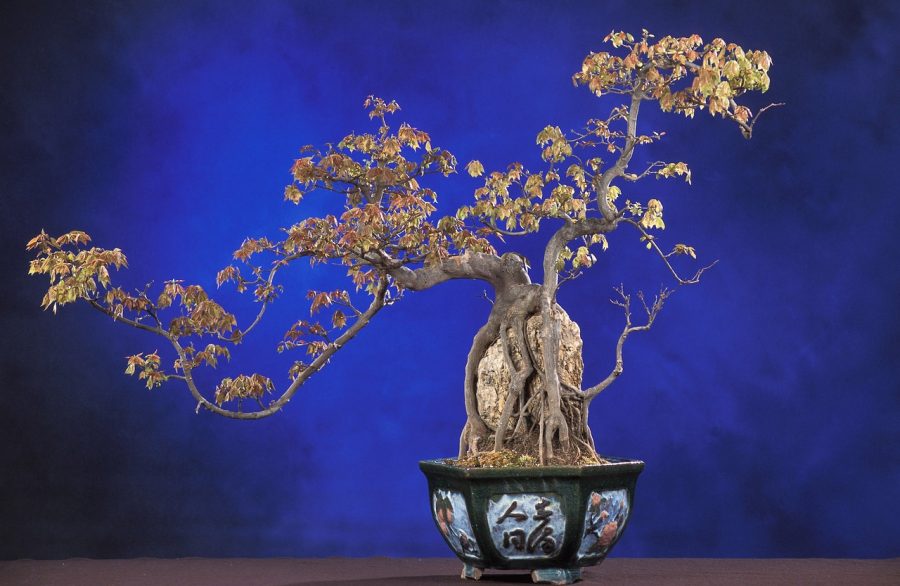
Importance of Repotting and Root Pruning
Repotting and root pruning are crucial aspects of indoor bonsai tree care.
Bonsai trees are typically grown in small pots. Over time, the roots of the tree can outgrow their pot and become root-bound, meaning the roots are tightly packed and have no room to grow.
This can lead to stunted growth, yellowing leaves, and even the death of the tree.
This is the main reason repotting and root pruning are a good idea and are necessary.
Repotting and root pruning allows the roots to spread out and grow, ensuring the tree stays healthy and strong.
When to Repot Your Indoor Bonsai Tree
The best time to repot your indoor bonsai tree is during the growing season in spring or early summer when the tree is actively growing.
It’s important to repot your tree every 1-2 years, depending on the species and growth rate.
How to Repot Your Indoor Bonsai Tree
Choosing the Right Pot Size:
Choose a pot that is one size larger than the current pot. The new pot should be shallow and have adequate drainage holes.
Preparing the New Pot and Soil Mixture: Mix a soil mixture that is appropriate for your tree species. Moisten the soil before adding it to the new pot.
Removing the Tree from Its Old Pot and Trimming the Roots: Gently remove the tree from its old pot and loosen any tightly packed soil.
Trim the roots by cutting away any dead, damaged, or tangled roots, and remove up to one-third of the root mass.
Planting the Tree in the New Pot:
Place the tree in the center of the new pot and fill in the space around the roots with the new soil mixture. Firmly press the soil down to eliminate any air pockets.
Proper repotting and root pruning can extend the life of your indoor bonsai tree and keep it healthy for years to come.
Pruning and shaping techniques
Pruning and shaping your indoor bonsai tree is essential for maintaining its shape and promoting healthy growth.
Bonsai trees require regular pruning to control their size and shape, as well as to encourage new growth.
Additionally, shaping techniques such as wiring and bending can help create the desired look and style for your bonsai tree.
We’ll cover when and how to prune and shape your indoor bonsai tree, as well as how to use wiring and bending techniques.
Common pests and diseases to watch out for
Unfortunately, like all plants, bonsai trees can be susceptible to pests and diseases.
Some common pests that can affect indoor bonsai trees include spider mites, scale insects, and mealybugs, while common diseases include root rot and fungal infections.
We’ll cover how to identify and treat common pests and diseases that can affect your indoor bonsai tree, as well as how to prevent them from occurring in the first place.
Bonsai Tree Styles
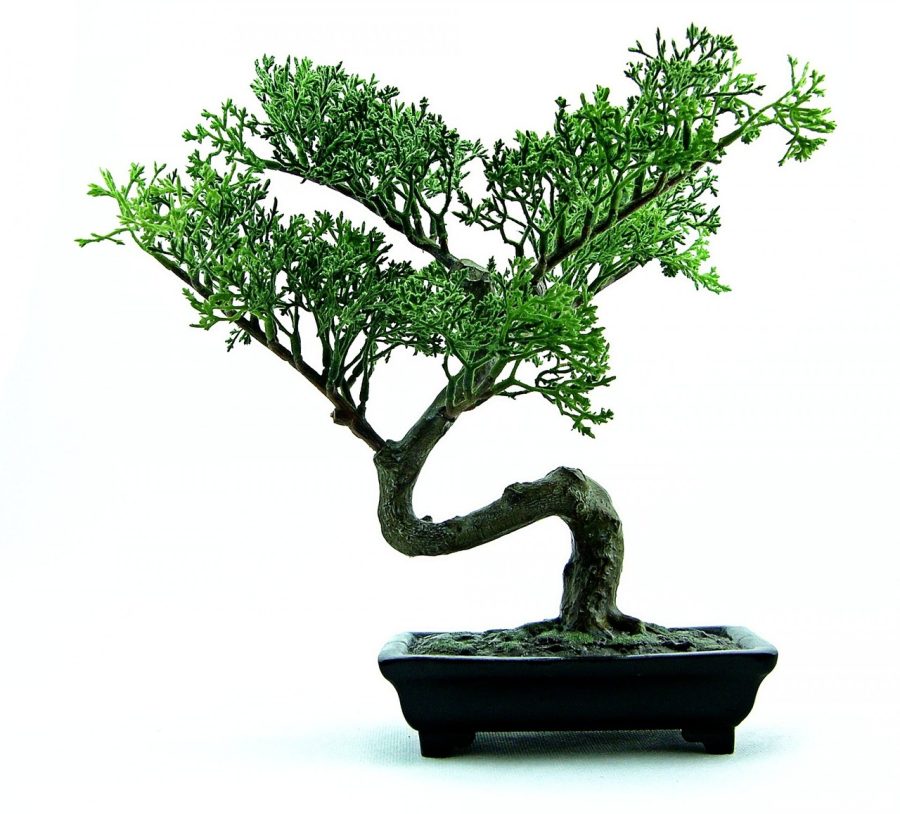
One of the fascinating things about bonsai trees is the variety of styles that can be created with these miniature trees.
Each style has its own unique characteristics and history, and choosing a style that speaks to you can be a fun and rewarding part of bonsai tree ownership.
In this section, we’ll explore some of the most popular bonsai tree styles, from the classic upright and slanting styles to the more unusual and modern styles.
So, get ready to discover the artistry of bonsai tree styles and find the one that resonates with you!
Overview of different bonsai tree styles
Bonsai trees can be styled in a variety of ways to create different visual effects and convey different meanings.
From the simple and elegant to the complex and dramatic, there’s a bonsai tree style for every taste and personality.
In this section, we’ll give you an overview of the most popular bonsai tree styles and what each style represents.
Techniques for achieving different styles
Creating a bonsai tree in a specific style requires careful planning and execution.
There are many techniques that bonsai artists use to achieve different styles, from pruning and wiring to grafting and carving.
In this section, we’ll cover some of the most common techniques used to create different bonsai tree styles, as well as tips for choosing the right techniques for your particular tree.
Examples of each style
One of the best ways to understand different bonsai tree styles is to see examples of them in action.
In this section, we’ll showcase some beautiful examples of each of the major bonsai tree styles, complete with descriptions of the characteristics that define each style.
Whether you’re interested in a classic upright style, a graceful cascade style, or something more modern and unconventional, you’re sure to find inspiration in these stunning examples.
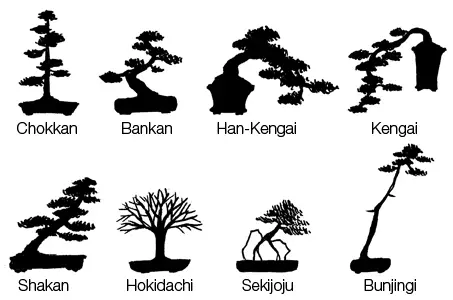
Tools and Supplies for Indoor Bonsai Tree Care
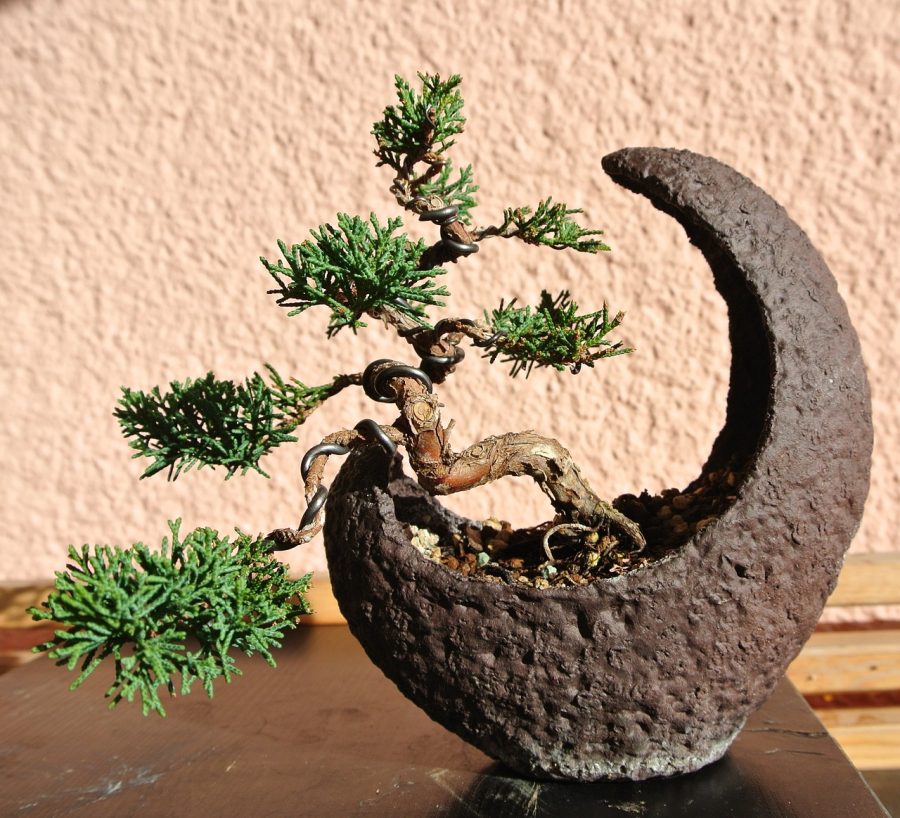
If you’re considering bringing an indoor bonsai tree into your home, it’s important to have the right tools and supplies on hand to ensure its proper care and maintenance.
From watering cans and pruning shears to soil mixes and fertilizers, there are a variety of products designed specifically for bonsai tree care.
In this section, we’ll take a closer look at the essential tools and supplies you’ll need to keep your indoor bonsai tree healthy and thriving, and where to find them.
So, let’s get ready to stock up on the supplies you need to become a successful bonsai tree caregiver!
Essential tools for indoor bonsai tree care
To keep your indoor bonsai tree healthy and looking its best, there are a few essential tools you’ll need to have on hand.
These include items such as a watering can, pruning shears, and soil scoop.
In this section, we’ll go over each of these tools in detail, including how to use them properly and what to look for when purchasing them.
Optional tools and supplies for advanced care
Once you’ve mastered the basics of indoor bonsai tree care, you may be interested in exploring some more advanced techniques.
There are a variety of optional tools and supplies that can help you take your bonsai tree care to the next level, from specialized soil mixes to wire cutters and concave cutters.
In this section, we’ll introduce you to some of these tools and supplies, as well as tips for using them effectively and safely.
Whether you’re a seasoned bonsai tree enthusiast or just starting out, these advanced tools and supplies can help you achieve even more stunning results.
Displaying Indoor Bonsai Trees
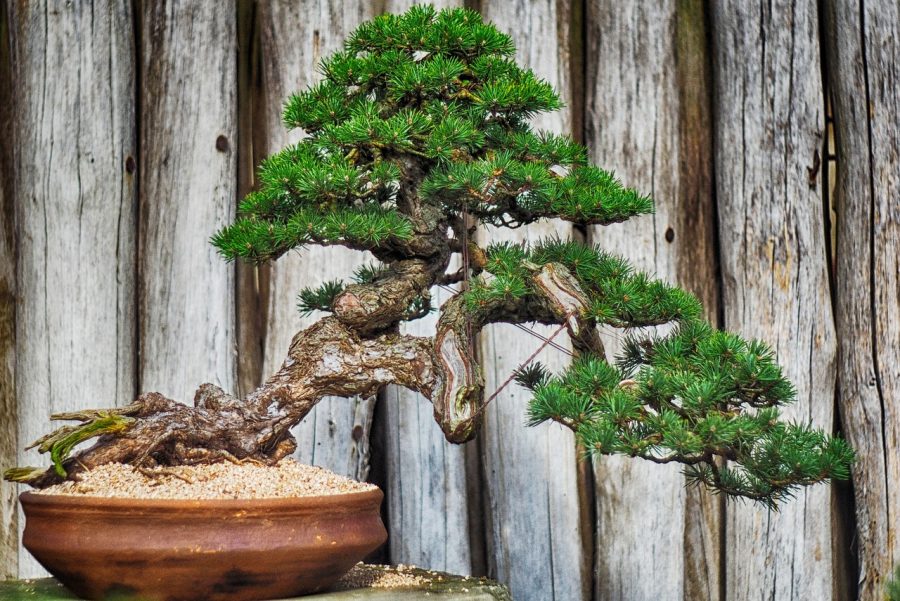
Your indoor bonsai tree is not only a beautiful living plant but also a work of art that can add a touch of elegance and serenity to your living space.
Displaying your indoor bonsai tree properly can enhance its beauty and provide a calming atmosphere for your home or office.
In this section, we’ll explore some creative ways to showcase your indoor bonsai tree, including the best locations, containers, and lighting options to help it thrive.
So, whether you’re looking to create a serene space for relaxation or simply want to add some natural beauty to your decor, read on to discover how to display your indoor bonsai tree like a pro!
Choosing the right pot and stand
When it comes to displaying your indoor bonsai tree, the right pot and stand can make all the difference.
In this section, we’ll discuss the different types of pots and stands available, including their materials, shapes, and sizes.
We’ll also explore how to choose a pot and stand that complements your bonsai tree’s style and enhances its overall appearance.
Styling tips for displaying bonsai trees
In addition to the right pot and stand, there are a variety of styling tips that can help you create a beautiful and harmonious display for your indoor bonsai tree.
From selecting the right location to arranging accent pieces and using creative lighting, we’ll share some expert tips for showcasing your bonsai tree in the best possible light.
Common display mistakes to avoid
While there are many ways to display your indoor bonsai tree, there are also some common mistakes to avoid.
From choosing the wrong pot size to over-decorating your display, we’ll share some common pitfalls to watch out for and provide tips on how to avoid them.
By keeping these tips and tricks in mind, you can create a stunning and memorable display for your indoor bonsai tree that will enhance the beauty of your home or office.
Troubleshooting Common Issues with Indoor Bonsai Trees
Taking care of an indoor bonsai tree can be a rewarding experience, but sometimes even the most diligent care can’t prevent issues from arising.
From yellow leaves to pests and diseases, there are a variety of common issues that can affect your indoor bonsai tree’s health and appearance.
In this section, we’ll explore some of the most common issues that indoor bonsai tree owners face and provide practical tips and solutions for troubleshooting them.
So, whether you’re a beginner or an experienced bonsai enthusiast, read on to learn how to keep your indoor bonsai tree healthy and thriving.
Solutions for yellowing leaves or dropping foliage
One of the most common issues that indoor bonsai tree owners face is yellowing leaves or dropping foliage.
This can be caused by a variety of factors, including overwatering, underwatering, lack of sunlight, or pest infestations.
In this section, we’ll explore some practical tips and solutions for addressing this issue, including adjusting your watering schedule, improving lighting conditions, and treating any pest problems.
Techniques for dealing with root-bound trees
Another common issue that indoor bonsai tree owners face is root-bound trees.
This occurs when the tree’s roots have grown too large for its pot, resulting in stunted growth and poor health.
In this section, we’ll discuss how to recognize the signs of a root-bound tree and provide techniques for addressing the issue, including repotting your tree and pruning its roots.
Tips for reviving a struggling bonsai tree
Despite your best efforts, your indoor bonsai tree may sometimes struggle or appear to be in poor health.
In this section, we’ll explore some tips and techniques for reviving a struggling bonsai tree, including assessing its overall health, adjusting its care routine, and using specialized treatments to address any issues.
With these tips in mind, you can help your indoor bonsai tree bounce back to health and continue to thrive for years to come.
Bonsai Tree Artistry and Culture
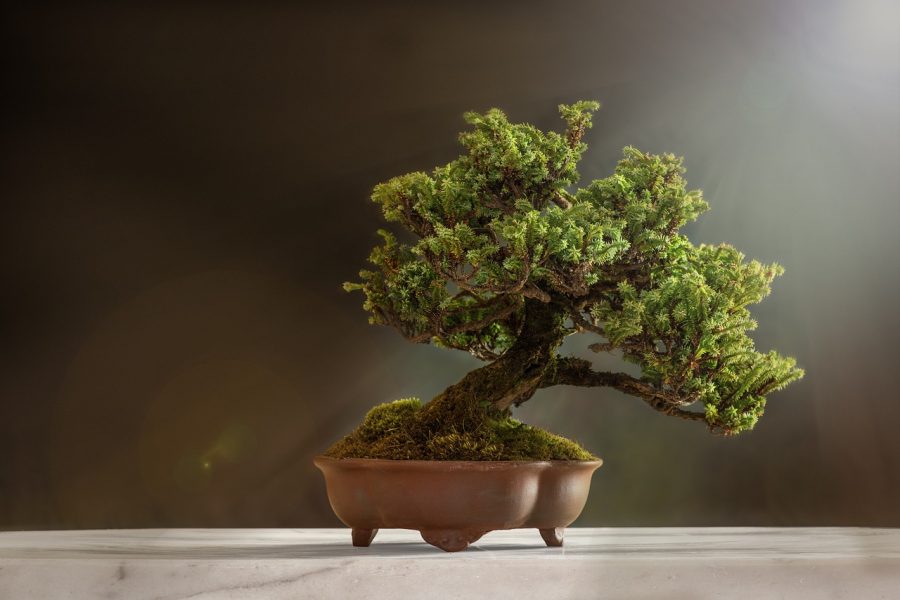
Bonsai trees have a rich and fascinating history, and their cultivation and care have become an art form and cultural tradition in many parts of the world.
In this section, we’ll explore the art of bonsai and the culture of bonsai trees, including their history and origins, cultural significance, and how they’ve evolved into the stunning works of art we see today.
Whether you’re a seasoned bonsai enthusiast or simply appreciate the beauty and artistry of these miniature trees, this section is sure to offer some valuable insights and inspiration.
Overview of bonsai tree artistry and culture:
Bonsai trees are not just ordinary plants, they’re an art form that requires skill, patience, and creativity.
In this section, we’ll take a closer look at the artistry and culture of bonsai trees.
Famous bonsai trees and their stories:
Bonsai trees have been around for centuries, and many of them have fascinating stories behind them.
From the oldest bonsai tree in the world to the one that survived the Hiroshima bombing, there are many famous bonsai trees that have captured people’s hearts and imaginations.
The cultural significance of bonsai trees in Japan and beyond:
Bonsai trees have deep cultural significance in Japan, where they originated.
They represent patience, discipline, and a connection to nature.
However, bonsai culture has spread far beyond Japan and has become a popular hobby and art form in many parts of the world.
We’ll explore how bonsai culture has evolved and what it means to different people and cultures.
Growing Bonsai Trees from Seeds
Are you interested in starting your own bonsai tree from scratch? Growing bonsai trees from seeds can be a rewarding and fulfilling experience.
In this section, we’ll provide you with all the information you need to get started with growing your own bonsai trees from seeds.
We’ll cover everything from the basics of seed germination to tips for successful seedling care.
Whether you’re a seasoned bonsai enthusiast or a beginner looking to try your hand at growing bonsai trees from seeds, this section has got you covered.
So let’s get started!
Overview of growing bonsai trees from seeds:
Growing bonsai trees from seeds is a rewarding and exciting process that allows you to create your own unique tree.
It’s a great way to get started in bonsai, as you can select the specific species and style that you want.
However, growing bonsai trees from seeds can be more challenging than starting with a pre-existing tree, as it requires patience and attention to detail.
Step-by-step guide on how to grow bonsai trees from seeds:
To grow a bonsai tree from a seed, you’ll need to start with high-quality seeds from a reputable source.
Once you have your seeds, you’ll need to germinate them using a suitable growing medium and provide them with the right amount of water, light, and warmth.
After the seeds have germinated, you’ll need to carefully tend to the seedlings until they are ready to be trained as a bonsai tree.
Tips for successful seed germination and seedling care:
Successful seed germination and seedling care require attention to detail and patience.
You’ll need to provide your seedlings with the right amount of water, light, and warmth to ensure they grow strong and healthy.
Common mistakes to avoid when growing bonsai trees from seeds:
When growing bonsai trees from seeds, it’s important to avoid common mistakes that can lead to poor seed germination or unhealthy seedlings.
These mistakes include overwatering, underwatering, using poor-quality seeds, and not providing enough light or warmth.
It’s also important to be patient and not rush the process, as bonsai trees take time to grow and develop.
Bonsai Trees for Beginners
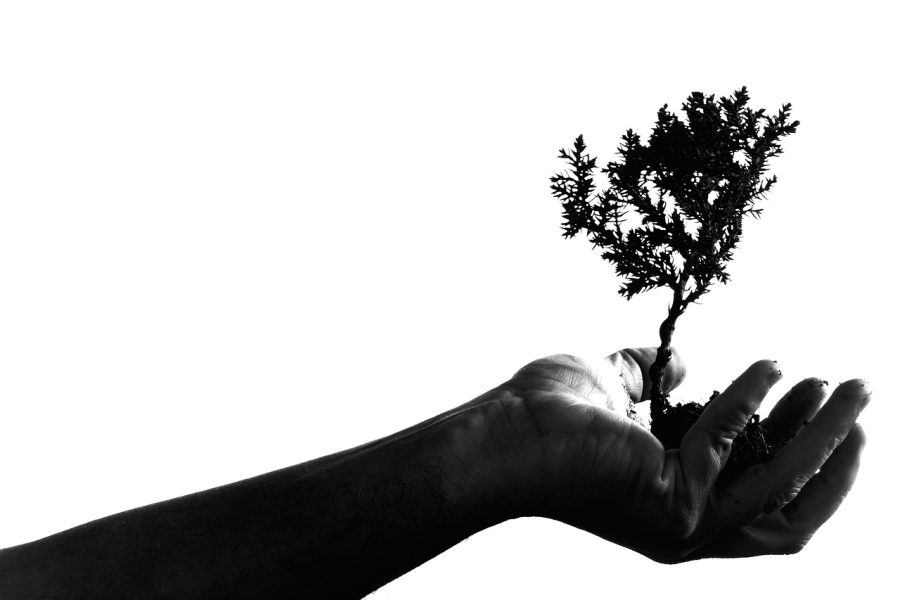
Are you new to the world of bonsai trees and feeling overwhelmed by the variety of options?
Don’t worry, we’ve got you covered! In this section, we will discuss some of the best bonsai tree species for beginners.
Whether you have a green thumb or not, these trees are easy to care for and will help you get started on your bonsai journey. So, let’s dive in!
Introduction to bonsai trees for beginners:
If you’re new to the world of bonsai trees, you might feel overwhelmed by the variety of species and techniques.
But don’t worry, bonsai tree growing can be a fun and rewarding hobby for beginners too!
In this section, we’ll provide an introduction to bonsai trees for beginners and guide you through the process of choosing and caring for your first bonsai tree.
Beginner-friendly bonsai tree species:
Not all bonsai tree species are created equal, and some are better suited for beginners than others.
We’ll introduce you to some of the most beginner-friendly species, such as the Chinese elm, the jade plant, the ficus bonsai tree(ficus benjamin), and the Fukien tea tree.
These trees are easy to care for, forgiving of beginner mistakes, and can thrive indoors or outdoors.
Factors to consider when choosing a bonsai tree for beginners:
Choosing the right bonsai tree as a beginner can make all the difference.
We’ll provide you with a list of factors to consider, such as the tree’s size, age, and level of care required.
We’ll also talk about how to choose a tree that matches your skill level and personal preferences.
Tips for caring for bonsai trees as a beginner:
Caring for a bonsai tree as a beginner might seem intimidating, but it doesn’t have to be.
We’ll give you some simple tips and tricks to help you care for your bonsai tree, such as how to water, fertilize, and prune your tree.
We’ll also talk about how to monitor your tree’s health and respond to any signs of stress or disease.
Common mistakes to avoid as a beginner bonsai tree grower:
As a beginner, it’s easy to make mistakes when caring for your bonsai tree.
We’ll highlight some of the most common mistakes to avoid, such as overwatering, using the wrong soil or fertilizer, and neglecting to prune or shape your tree.
By learning from these mistakes, you can avoid them and enjoy a healthy and thriving bonsai tree.
Indoor Bonsai Trees FAQs
Indoor Bonsai trees are a captivating way to bring a touch of nature into your home or office.
Their miniature size and aesthetic appeal make them a delightful addition to any space.
However, to thrive, they require a particular set of conditions and care. Here are some frequently asked questions regarding indoor Bonsai trees:
Q. How often should I water my indoor Bonsai tree?
A. The frequency of watering varies depending on the species, size of the pot, and the environment. It’s crucial to keep the soil moist but not waterlogged. Checking the soil’s moisture daily is advisable.
Q. What type of soil is suitable for indoor Bonsai trees?
A. Indoor Bonsai trees thrive in a well-draining soil mixture. Common components include akadama, lava rock, peat moss, perlite, and vermiculite. The right soil ensures proper moisture and nutrient retention.
Q. How do I ensure my indoor Bonsai tree gets enough light?
A. Most indoor Bonsai trees require bright, indirect sunlight. Placing them near a south-facing window is often ideal. If natural light is insufficient, supplement with artificial lighting like LED grow lights.
Q. Can I grow a Bonsai tree from seed indoors?
A. Yes, growing a Bonsai tree from seed indoors is possible, but it requires patience and attention to detail.
Ensure the seeds have the right conditions for germination, including proper soil, light, and moisture.
Indoor Bonsai Trees Conclusion
And that’s a wrap on our guide to indoor bonsai tree care!
Whether you’re a seasoned bonsai tree enthusiast or just starting out, we hope this guide has been helpful in providing you with the knowledge and confidence to care for your indoor bonsai trees.
Remember, each tree is unique and requires attention to detail and patience, but the end result is a beautiful work of art that brings peace and tranquility to any indoor space.
So go ahead, choose your favorite bonsai tree species, get your tools and supplies ready, and enjoy the rewarding journey of growing and caring for your very own indoor bonsai tree. Happy growing!
Benefits of Indoor Bonsai Trees:
To recap, indoor bonsai trees offer a range of benefits, from improving air quality to providing a calming presence in your home or office.
They are also a unique and rewarding way to connect with nature and practice mindfulness.
Final Tips for Care:
Remember to carefully consider the species of your indoor bonsai tree and its specific care needs.
Be sure to research and follow proper watering, soil, and pruning techniques.
Consider the placement and display of your bonsai tree to ensure optimal growth and aesthetic appeal.
A Call to Action:
Now that you have a comprehensive understanding of indoor bonsai trees and how to care for them, it’s time to start your own collection!
Whether you choose to grow from seed or purchase a pre-bonsai tree, the joy and satisfaction of nurturing and watching your bonsai tree thrive is unparalleled.
So, get your hands dirty and start your own indoor bonsai tree journey today!



